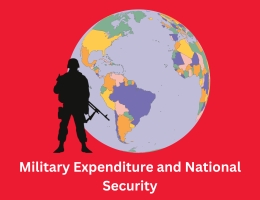
War and peace: contrasting Australian assistance and defense budgets
- By admin --
- Sunday, 07 Apr, 2024
It's hard not to be a little miffed by headlines touting increases in Australian defense spending when one is an advocate of aid; the most recent example being the announcement of a $50 billion investment to construct Australia's next submarine fleet. And I'm not the only one who thinks this way.
However, our study on public opinion on aid has also shown that Australians frequently greatly overestimate and underestimate the amount of money the government spends on various programs. So, is it appropriate for me to be upset? What is the true amount of Australian defense spending in relation to international aid? And how do we stack up against other nations in terms of investment in these areas?
The Federal Budget for the year 2016–17 revealed that $32.3 billion would go into defense and $3.8 billion would go for ODA. Australia's Defence and ODA budgets as a percentage of total federal spending during a 20-year period, including projections for 2019–20, are displayed in the chart below.
It is evident that defense spending is rising and will continue to do so for some time. As my colleague Robin recently blogged, aid, on the other hand, is expected to continue its downward trend as a percentage of GNI and stay flat as a percentage of government expenditure for several years to come, even if the Australian Labor Party forms government in July.
One noteworthy similarity between defense and aid is that in recent years, both have been subject to bipartisan spending targets: 2% of GDP for defense and 0.5% of GNI for aid. These two targets' fortunes, though, have developed somewhat differently. The aid aim has been virtually abandoned, but the Defense White Paper, which was published earlier this year, contains a new ten-year funding model that, based on current predictions, sees the Defense budget increasing to $42.4 billion by 2020–21, or 2% of GDP. The separation of this goal from adjustments to GDP projections was a significant innovation in this case.Furthermore, according to White Paper funding forecasts, Australia's defense budget is expected to expand at a rate that appears to be at or above nominal GDP growth in addition to exceeding the $42.4 billion 2021–22 target. ASPI's recent analysis of strategic choices for the next government reflects the defense sector's stance toward the aim, arguing that the 2% GDP defense target should be better understood as a "mandatory floor" as opposed to a "aspirational ceiling."
How much do we currently spend on aid and defense compared to other nations? While extrapolating future costs for nations other than Australia is challenging, past comparisons are possible according to the SIPRI Military Expenditure Database. Australia has consistently outperformed the DAC average and median figures in terms of military spending as a percentage of GDP when compared to nine other nations of interest and the OECD DAC.Australians are used to comparing themselves to the British, so it's important to note that, in terms of military spending as a percentage of GDP, 2015 figures show Australia, the UK, and, interestingly, China side by side (NB: SIPRI's definition of "military expenditure" includes more than just the Defense budget, which explains the data indicating that Australia is already spending 2% of GDP).
There is, however, a glaring difference in the proportions of spending on the military and humanitarian assistance. The graph below shows the UK and Australia's military-to-ODA spending ratio during the previous 20 years. Although Australia was once significantly outspent by Britain in terms of military spending, this ratio has mostly decreased and even fell last year due to the enactment of laws requiring the UK to provide 0.7% of GNI to aid.
With the exception of the US (18.7) and South Korea (18.3), which is to be expected, Australia currently scores higher than all nine of the comparator countries, with a military-to-aid spending ratio of 7.3 in 2015. In 2015, the military-to-ODA spending ratio for DAC countries was 4.1 on average.
Critics said that Australia was turning into "a military minnow" but also "an aid powerhouse" at the height of the aid scale-up. The roles have now genuinely reversed.
This site has already pointed out that the Coalition's aid cuts have essentially undone the previous aid scale-up. The aforementioned figure illustrates how the administration is going back to its pre-scale-up "defence first" strategy. At the beginning of the century, we spent $10 on defense for every $1 on aid. That was as low as $5 in 2012, but by 2020, we should be nearly back to $10.





